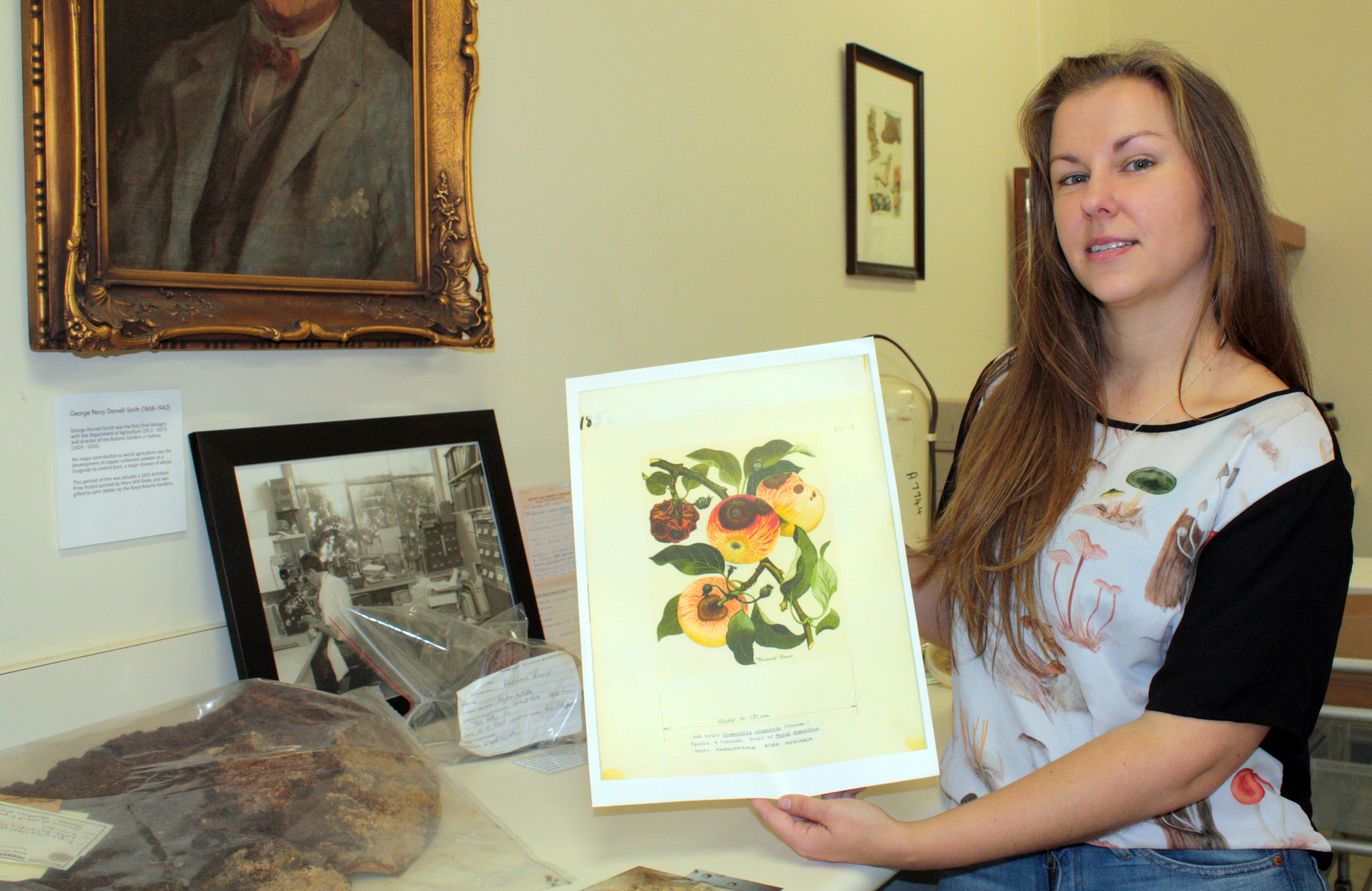
A unique display of technical rigour and creative talent, which goes on show at the Orange Regional Museum (ORM) from this Wednesday April 17 until June 30, will reveal a treasure trove of scientific illustrations.
NSW Department of Primary Industries Biosecurity Collections leader, Jordan Bailey, said the exhibition from the department’s collection dates from the 19th century.
“The collection has art works from the 1890s, illustrated books from the 1860s and many works from the early 1900s,” Dr Bailey said.
“These beautiful and intriguing works of art helped farmers farm in a time when photography was uncommon, before video, YouTube, Instagram and smartphones existed.
“Drawings and paintings were produced to better inform growers and the community about production issues, helping them identify and manage pests and disease.
“Illustrations were used to engage farmers too – we have the original works from the Better Farming Train, an initiative of the Jack Lang Labor Government, which toured across NSW with 10 carriages of information and experts from 1927 until 1929.”
A special program is running at ORM in tandem with the exhibition. Students are invited to a workshop and opportunities to explore and tiny creatures under the microscope before experimentingwith scientific illustration techniques.
Featured artists in the exhibition, Margaret Senior and Emil H. Zeck have documented natural history and plant pests and diseases in NSW.
Dr Jordan said these significant works relate to our agricultural heritage, artistic styles and printing techniques.
“Their work helps us understand the world around us, with so much technology we use today originating from the natural world,” she said.
“Our focus on biosecurity aims to protect Australia’s agroecosystem and environment from pests and diseases. Illustration remains a powerful tool to help us record what is here now and what exotic threats could impact on farming in the future.”
“Illustration and graphics help streamline and visually communicate important features and place focus where it is needed, especially in cases where photography can’t convey what an illustration can – when a specimen is semi-translucent, too shiny, or damaged.”
The exhibition is supported by the Office of Environment and Heritage Heritage Near Me program.








